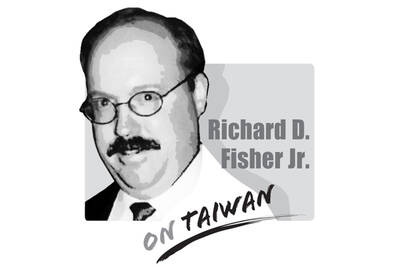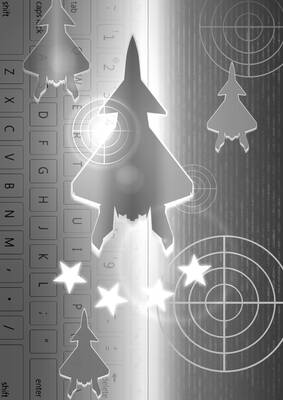Europe and Asia have a centuries-old common history. The ties between the two continents are today reaching an unprecedented level. Asian markets account for over one-third of exports from the European Union. Almost half of the goods and services imported by the EU come from Asian countries.
Every year, thousands of students, academics, researchers move between the EU and Asia. The cultural exchanges between our cities are vibrant. And there is more to our mutual relationship than just economic or scientific exchanges: the European Union and Asian countries have a common interest in preserving a cooperative, rules-based and peaceful international system, where multilateral organizations are the natural fora for reaching common solutions. This relationship needs to rely on effective, functioning and sustainable connectivity, in other words on the physical and non-physical infrastructure through which goods, services, ideas and people can flow unhindered.
While connectivity has always been a part of the EU’s policy towards Asia, until now the EU has not used its potential in this area to the full. That is why we have proposed a new policy framework to step up the EU action, an EU strategy on connectivity between Europe and Asia.
Our message is clear: The European Union is ready to step up its engagement with Asian partners on an agenda for connectivity, based on mutual interests and common objectives. Connectivity is in the very DNA of the European Union, as a political project based on market integration. We can offer our regulatory experience, technical expertise and funding opportunities at the service of projects that help interoperability and convergence, promote fiscally and environmentally sound growth, and strengthen our connections in a way that will be beneficial for us all.
We can do this in three ways. Firstly, the EU is ready to support new connections and networks between Europe and Asia. For example, extending our Trans-European Transport Network, which facilitates trade and mobility through removing technical and regulatory barriers for transport networks and modernizing infrastructure to other non-EU countries would be a positive step.
We will also pursue a sustainable digital agenda with Asia in order to foster universal and affordable access to digital technologies and services. We will share our experience in creating regional, liberalized energy markets with a focus on market-driven transformation towards clean energy. And we will continue to promote human exchanges and mobility through programs such as Erasmus or the Marie Curie Action as a way to build connections, mutual understanding and share ideas.
Secondly, under the EU approach, connectivity can only be built in partnership. Many such partnerships exist already. Over the last years, the EU and Taiwan have increased the number of new flight routes. As a result, four times more Taiwanese visitors came to the EU in 2017 than in 2013. This increase in people-to-people exchanges is also reflected in the number of Taiwanese students in the EU which grew in 2017 by 15.6 percent.
We will continue to work with Taiwan, as well as regional organizations and mechanisms existing in Asia, such as ASEAN, to identify and support projects. In the area of collaborative business and innovation, leading Taiwanese chip companies, for instance, participate in Galileo — the global satellite navigation system operated by the European Union. We are actively looking forward to enhance this cooperation in order to build up a modern, interconnected infrastructure.
We want to work on a connectivity based on shared principles: transparency, non-discriminatory market practices, a level playing field for economic operators, protection for intellectual property rights. The best way to achieve this is not to impose anyone’s standards or rules, but to work together within international organizations on mutually acceptable ones. European companies must have a level playing field vis-a-vis their competitors and have the same access to markets abroad as others have in the EU.
Finally, we will mobilize all our levers to back projects with adequate funding, using to the full the potential of the European Investment Bank and of the new tools for external investment policy available under the EU budget. According to the Asia Development Bank, Asia will require over 1.3 trillion euros (US$1.50 trillion) a year of infrastructure investment in the coming decades. The EU is ready to support Asian countries to meet such an investment challenge leveraging public and private financing through a combination of grants, guarantees, lending and blending. Yet, investment must be fiscally viable and financially sustainable. The EU will only support projects that mobilize domestic resources, create value for local communities and are sustainable in the long term.
Together, Europe and Asia account for almost 70 percent of global population and over 60 percent of the world’s GDP. There is space for making our ties stronger and more mutually beneficial. Sustainable connectivity, based on strong partnerships and transparent rules, is for the EU, European and Asian countries, the best way forward.
Federica Mogherini is High Representative of the European Union for Foreign Affairs and Security Policy, and Vice President of the European Commission.

As the Chinese Communist Party (CCP) and its People’s Liberation Army (PLA) reach the point of confidence that they can start and win a war to destroy the democratic culture on Taiwan, any future decision to do so may likely be directly affected by the CCP’s ability to promote wars on the Korean Peninsula, in Europe, or, as most recently, on the Indian subcontinent. It stands to reason that the Trump Administration’s success early on May 10 to convince India and Pakistan to deescalate their four-day conventional military conflict, assessed to be close to a nuclear weapons exchange, also served to
China on May 23, 1951, imposed the so-called “17-Point Agreement” to formally annex Tibet. In March, China in its 18th White Paper misleadingly said it laid “firm foundations for the region’s human rights cause.” The agreement is invalid in international law, because it was signed under threat. Ngapo Ngawang Jigme, head of the Tibetan delegation sent to China for peace negotiations, was not authorized to sign the agreement on behalf of the Tibetan government and the delegation was made to sign it under duress. After seven decades, Tibet remains intact and there is global outpouring of sympathy for Tibetans. This realization
After India’s punitive precision strikes targeting what New Delhi called nine terrorist sites inside Pakistan, reactions poured in from governments around the world. The Ministry of Foreign Affairs (MOFA) issued a statement on May 10, opposing terrorism and expressing concern about the growing tensions between India and Pakistan. The statement noticeably expressed support for the Indian government’s right to maintain its national security and act against terrorists. The ministry said that it “works closely with democratic partners worldwide in staunch opposition to international terrorism” and expressed “firm support for all legitimate and necessary actions taken by the government of India

The recent aerial clash between Pakistan and India offers a glimpse of how China is narrowing the gap in military airpower with the US. It is a warning not just for Washington, but for Taipei, too. Claims from both sides remain contested, but a broader picture is emerging among experts who track China’s air force and fighter jet development: Beijing’s defense systems are growing increasingly credible. Pakistan said its deployment of Chinese-manufactured J-10C fighters downed multiple Indian aircraft, although New Delhi denies this. There are caveats: Even if Islamabad’s claims are accurate, Beijing’s equipment does not offer a direct comparison